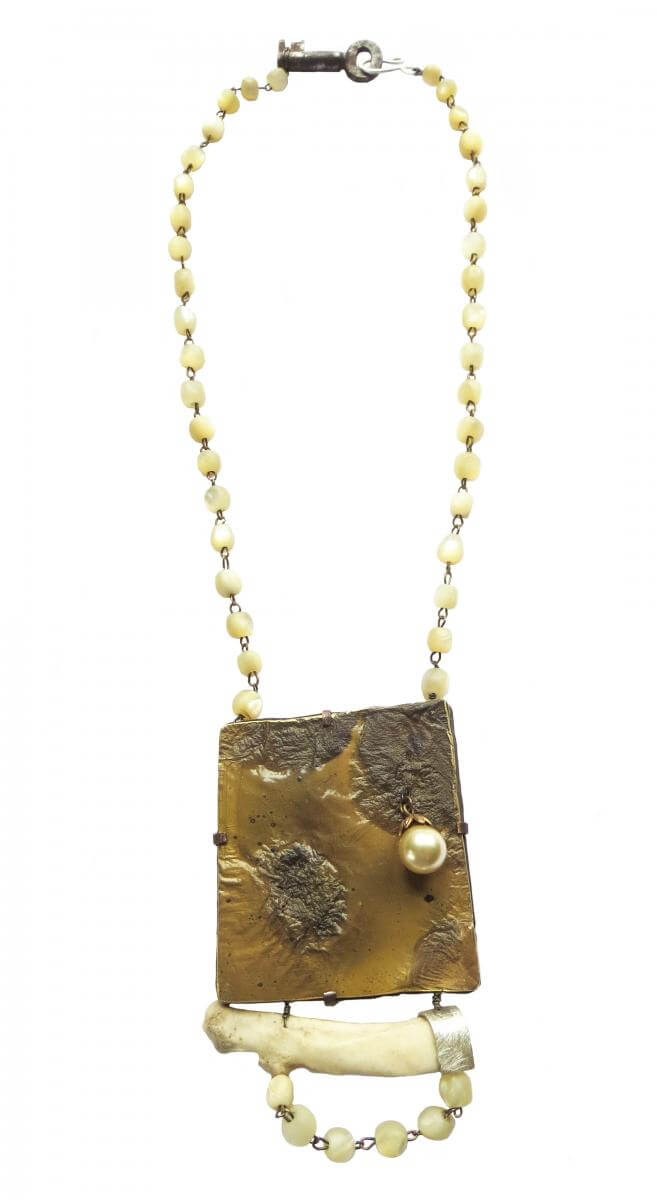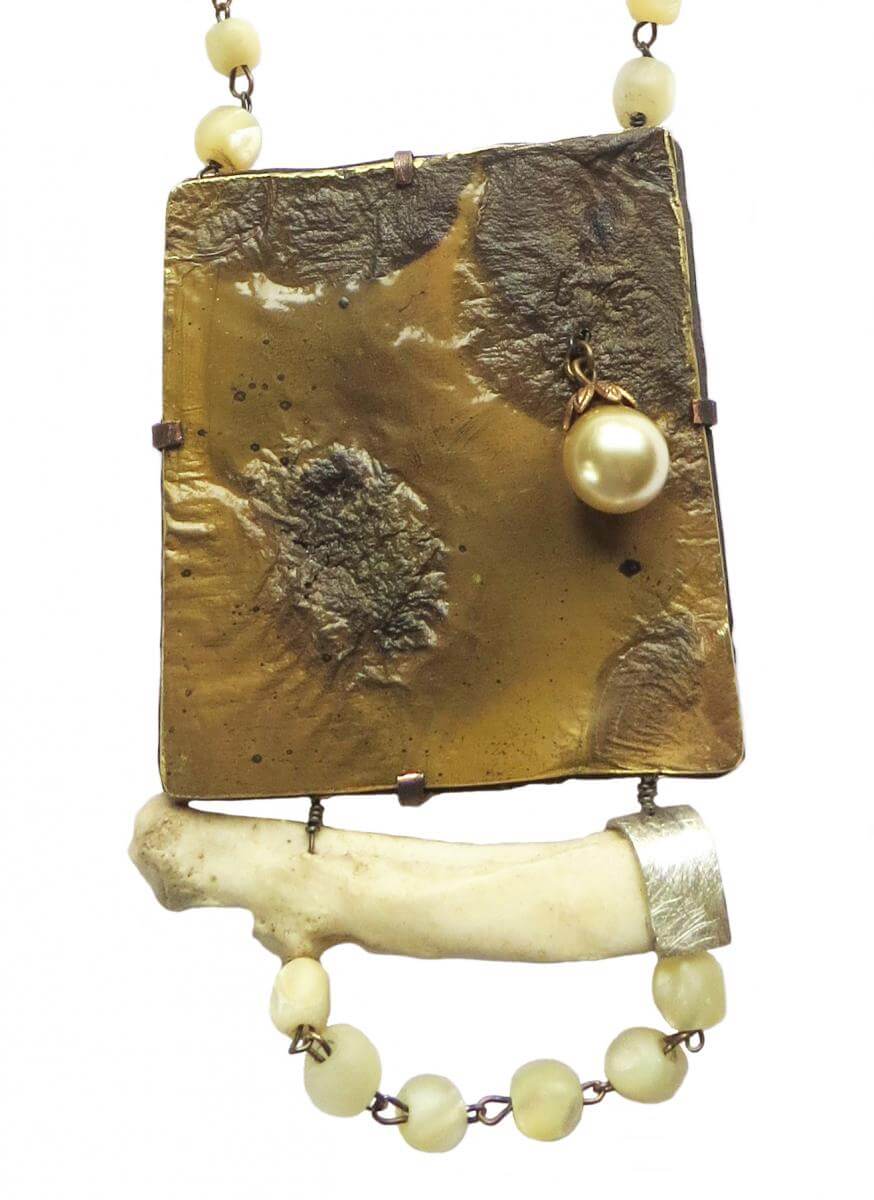Improvisa
2015
NECKPIECE (Brass, copper, vintage beads, mounted vintage faux pearl, recycled silver, bone, key)

“Whoever then has his mind kept in repose by moderation and firmness, and is at peace with himself so that he is neither wasted by troubles nor broken down by fear, nor burns with longing in his thirsty quest of some object of desire, nor flows out in the demonstration of empty joy, is the wise man whom we seek; he is the happy man, to whom no human fortune can seem either insupportable so as to cast him down, or too joyful so as to elate him unduly. For what in human affairs can seem great to him who takes cognizance of all eternity and of the immensity of the whole universe? Indeed, what in human pursuits or in the narrow period of life can seem great to the wise man, whose mind is always so on the watch that nothing sudden, nothing unthought of, nothing altogether new can happen to him? Such a man looks with so keen insight in every direction that he always sees a place of abode where he can live without trouble or distress, and that whatever accident fortune may bring, he can bear it fittingly and calmly…”
(Cicero, Tusculan Disputation, 4, XXVII, A. P. Peabody, transl., 1886, Boston: Little, Brown and Co., pp. 219-20)

Cicero, in “On the Passions”, the fourth book of his Tusculan Disputations, describes the elements of Stoic philosophy. According to the Stoics, freedom could be attained by following reason, so that “passions” (or “perturbations”) could be transformed through clear judgment, inner peace, and being at one with the natural order of the universe. So, unlike in our modern understanding, following the Stoic teachings meant seeking peace of mind through the practice of objective thinking and the acceptance of “logic”, or universal reason.
The person who has achieved true wisdom is therefore the one who walks into anything that crosses his/her path with the understanding that this is part of the process of nature and the wider universe. Furthermore, the wise person has such a deep and holistic perception of the workings of the natural order that nothing can ever be unforeseen or unthought of.


The title of this piece and inscription on the back (“unforeseen events are permitted to the wise”) are my own extension to this concept. As individuals, the more we live – the more we experience – the more we grow our wisdom and our ability to understand the universe around us and how we fit into its order. As makers, we also grow our understanding of our medium and our materials, and we gain wisdom of how our practice fits into our own life’s philosophy and where we belong in the universe of our art. This means unforeseen events in our making are never really such because we are aware of their possibility and have learnt to play along with them. And therefore, they are permitted.
The centre-piece of this necklace is one such unforeseen event: demonstrating how brass does not react beautifully like copper to extreme heat, and being in fact confronted with the most incredible texture and colour. As makers, our wisdom lies in and grows with the knowledge and the acceptance that our materials are always ready to surprise us.
